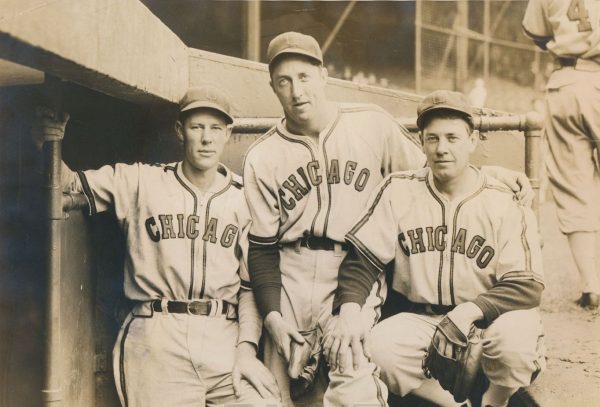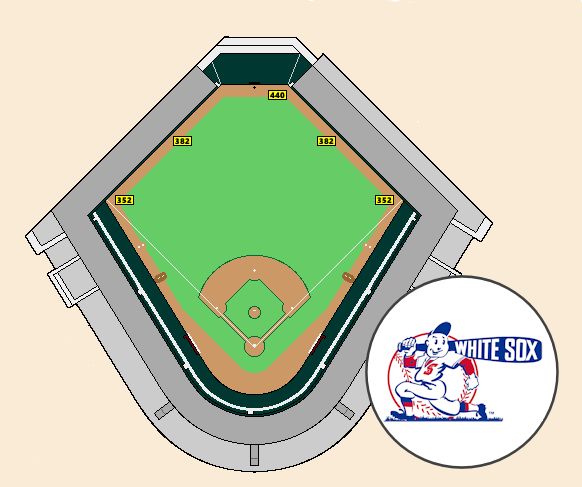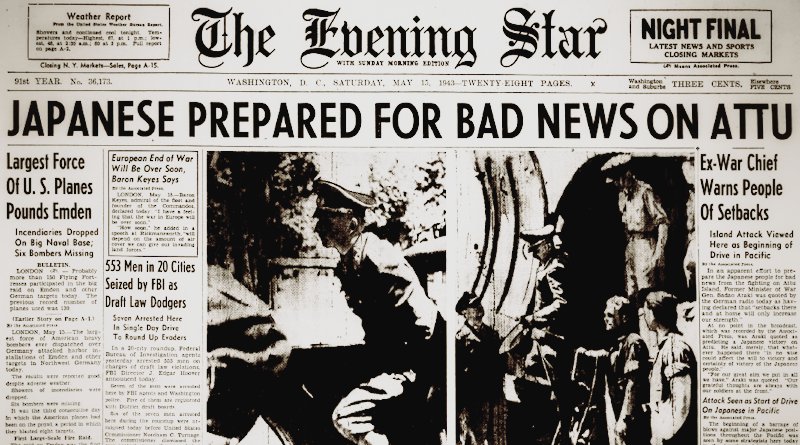World War II Chronicle: May 15, 1943
Click here for TODAY’S NEWSPAPER
The front page reports that the largest formation of American bombers in the war to date has attacked Germany in a multi-layered assault. VIII Fighter Command sent 161 P-47 Thunderbolts across the channel, but the Luftwaffe didn’t bite. One P-47 ditched in the water and was spotted in his raft, but search and rescue crews were unable to locate the pilot. The fighter sweep only managed to damage two enemy aircraft — the Germans are only interested in the bombers.
113 B-17s from the 91st, 92nd, 303rd, 305th, and 306th Bomb Groups targeted naval facilities at Heligoland Island and airfields at Wangerooge and Düne Islands. This too was an attempt to goad the Luftwaffe into a fight to draw them away from the raid’s actual target. The diversionary element worked, drawing more enemy fighters than air crews had seen before. According to the 303rd’s report, they were swarmed by 50-75 Focke-Wulf Fw-190s, Messerschmitt Bf 109s, and Messerschmitt Bf 110s.
19 Forts from the 351st Bomb Group broke off of the formation to attack harbor facilities at Wilhelmshaven. While all targets were of strategic value, the purpose of these other targets was to keep German interceptors away from the 61 bombers from the 94th, 95th, and 96th Bomb Groups who drop incendiaries on the town of Emden. In total, six B-17s are lost. Our gunners claim 46 kills, 33 probable, and 31 damaged. 323 tons of ordnance is dropped…
On page two, the Northwest African Air Forces are hammering Axis targets from one end of the Mediterranean to the other. American bombers have hit the port of Civitavechhia, which is 40 miles northwest of Rome, targets across Sardinia, and the remnants of the Afrikakorps off Cape Bon. Meanwhile in the Pacific, B-25s and A-20s of the Fifth Air Force hit targets in New Guinea and New Britain. Seventh Air Force B-24s out of Midway bomb facilities on Wake. And Eleventh Air Force B-24s and P-38s are giving it to the Japanese in the Aleutians. This gives you an idea just how massive the American war effort is. What a challenge it must be to somehow figure out how to get all these planes to where they need to be, supplied with many tons of ordnance, all the necessary fuel and fluids, and replacement parts. If you don’t have adequate food, water, training, hygiene, clean uniforms, and rest for millions of men, then you aren’t effective. Everything needs to be at the right place at the right time, in the right priority. Despite the incredible logistical demands of moving everything thousands of miles, despite the threat of enemy attack and horrible weather, American fighting men still have what they need to do their deadly jobs all across the globe, simultaneously…
Eulace Peacock, one of few people alive that can beat Jesse Owens, is picture on page five. “The World’s Fastest Man” serves in the Coast Guard…
George Fielding Eliot writes about the Attu campaign on page 10… Sports section begins on page 16. Chicago White Sox pitcher Buck Ross let a no-hitter literally slip through his fingers. The Yankee’s sole hit came off the bat of Nick Etten, who hit a bouncer in the top of the second inning to Ross that glanced off his pitching hand. Had it been scored an error, Ross would have the first no-hitter since the Cardinal’s Lon Warneke blanked the Reds in 1941. Etten was the only Yank to reach base all day, and did so twice when he walked in the eighth. Ross was able to skip the minor leagues entirely, signed in 1936 by Connie Mack after being discovered playing semi-pro ball in the Carolina Textile League.

Recently we discussed Shibe Park, baseball’s first concrete-and-steel stadium. Pittsburgh’s Forbes Field opened the same year as Shibe — 1909 — and the following season saw the third debut of non-wooden ballpark: Comiskey Park. Its playing field was symmetrical, which was unusual for a baseball stadium. The Cubs played their World Series games at Comiskey in 1918 instead of the smaller Wrigley Field. Groundskeepers moved home plate 14 feet closer to the outfield wall when they acquired heavy hitting Al Simmons from the A’s in 1934, then bumped everything back when he left after the 1936 season. Comiskey was also where Joe Louis defeated James Braddock to become the heavyweight champion of the world. Braddock was the only boxer that Louis ever called “champ,” and he joins the Army during the war, teaching soldiers hand-to-hand combat on Saipan.

Evening star. (Washington, D.C.), 15 May 1943. Chronicling America: Historic American Newspapers. Lib. of Congress.
https://chroniclingamerica.loc.gov/lccn/sn83045462/1943-05-15/ed-1/
